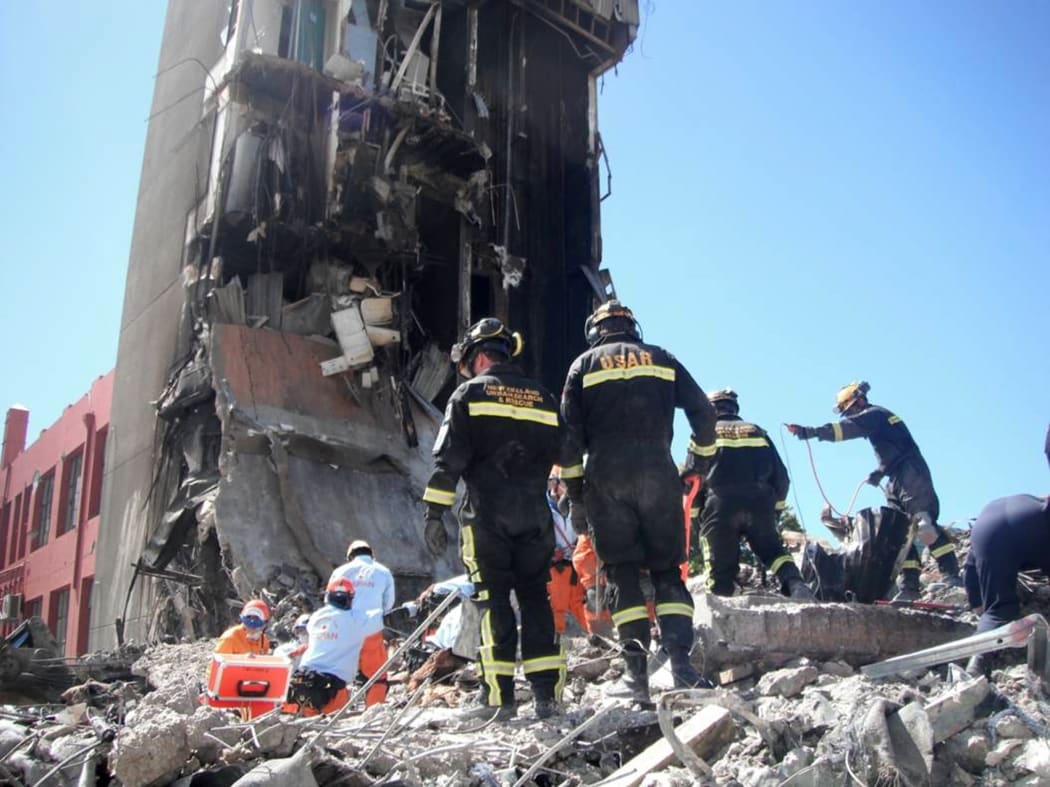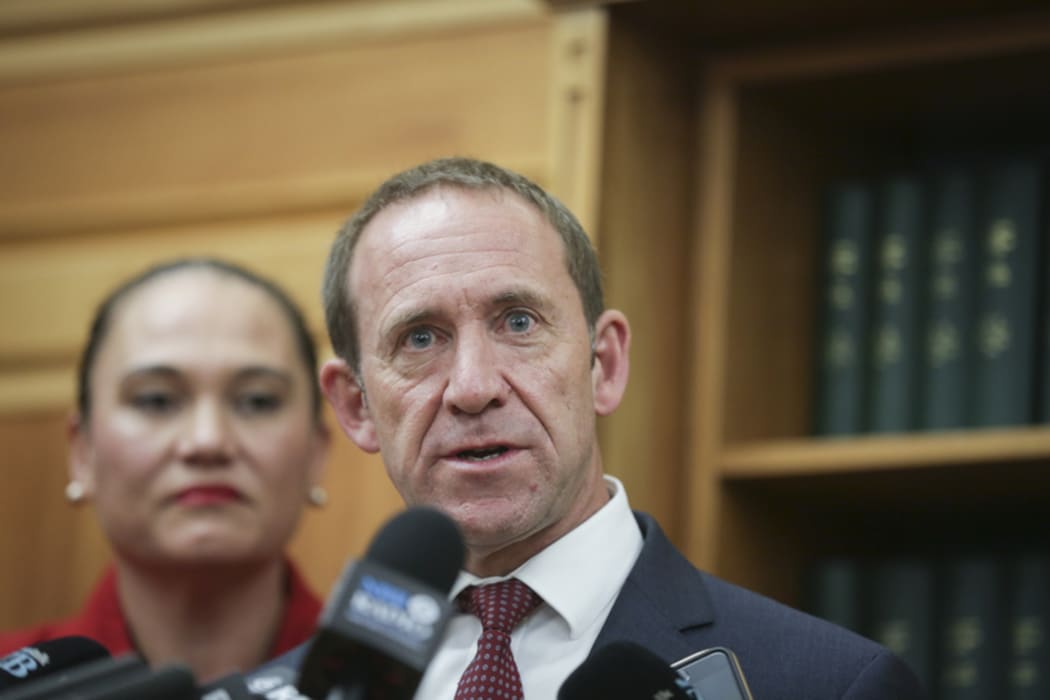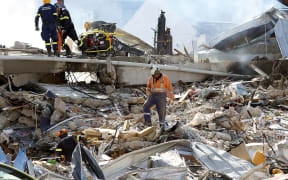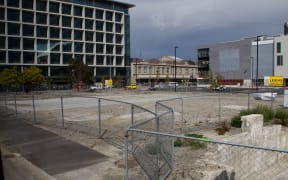A criminal prosecution against the designers of the CTV building was abandoned even though engineers said it was clear substandard design led to the collapse.

Rescue workers outside the Christchurch CTV building in 2011. Photo: AFP / USAR
On Thursday, police announced they did not have sufficient evidence for a successful prosecution.
"If I'd taken my heart's advice, we would have prosecuted. I can't take my heart's advice, I have to use my head," Detective Superintendent Peter Read said.
Justice Minister Andrew Little said he wanted to consider introducing a corporate manslaughter charge in the future.
"Everybody involved in this has walked away scot-free. And that's not right," he said.

Justice Minister Andrew Little Photo: RNZ / Rebekah Parsons-King
Documents released by the police show the Crown Solicitor had concluded there was enough evidence to lay charges of negligent manslaughter against designers Alan Reay and David Harding, after a three-year $1.2 million police investigation.
The centrepiece of that investigation was a report by the leading engineering firm BECA that lays out a dozen major deficiencies in the structural design.
"It is our opinion that, had the whole building complied with codes and practices of the day, the building, though damaged, would have had sufficient resilience not to collapse suddenly and in a pancaking fashion," BECA said.
"Dr Reay's omission to discharge his obligations in regard to the allocation of appropriate resources to the design were the reason why the design errors were not identified and corrected, and was therefore a substantial and operating cause of the deaths."
BECA and the two peer reviewers agreed that Dr Reay and Mr Harding did not fulfil their duty to design up to code - a major departure from expected standards, which was a substantial cause of the collapse.
Not a 'trial by expert'
But Deputy Solicitor General Brendan Horsley pulled back, saying "this is not trial by expert" and he considered the prospects of a successful prosecution were low, as did the Crown Solicitor.
"A key difficulty for the prosecution would be in proving the CTV building would not have collapsed in the absence of the identified design errors," he said.
"The expert peer reviewers were cautious about drawing this conclusion."
An American peer reviewer, who is not named, said it was possible the collapse could have occurred in the absence of design errors due to higher than expected ground motions in combination with the building's lack of resilience.
The documents explained that the building code at the time did not demand adequately strong columns for resilience in high-risk zones.
However, a New Zealand peer reviewer pointed out other buildings of a similar age and type withstood the quake and that the designers did not take into account the building having to move sideways in a quake.
The building's designer Dr Reay said he was "deeply anguished."
In a statement, he said: "I have tried to understand why the building characteristics changed after the September 2010 earthquake and then ultimately collapsed.
"It is my strongest hope that from this tragedy every possible lesson is learned."
At the time CTV was designed he held a doctorate in seismic engineering.
The engineering reports to the police said the Christchurch City Council issued the CTV building approval without a thorough structural check, but that this was standard practice - and it still is.
"Councils are reliant on the information provided by the structural engineers," said Nick Hill, chief executive of Building Officials Institute.
Engineering New Zealand said it had made "huge changes" since the CTV collapse to hold engineers more accountable.
A stricter ethical charter meant its 20,000 members had an obligation to take action if they came across poor design or any other "real' public safety issue, it said.
Also, they could no longer resign their membership if they came under investigation, as Dr Reay did.
Dr Reay remains a director and shareholder in various engineering, design and property companies, including Engenium, which was what he renamed his main firm after the CTV Royal Commission.
Engenium has been awarded major contracts, such as the Health Research Education Facility in Christchurch, schools and Alexandra Park Apartments in Auckland.
The Ministry of Business, Innovation and Employment said it has introduced a slew of changes since 2011 aimed at reducing death, injury and loss in a quake, including better seismic design standards for buildings.





